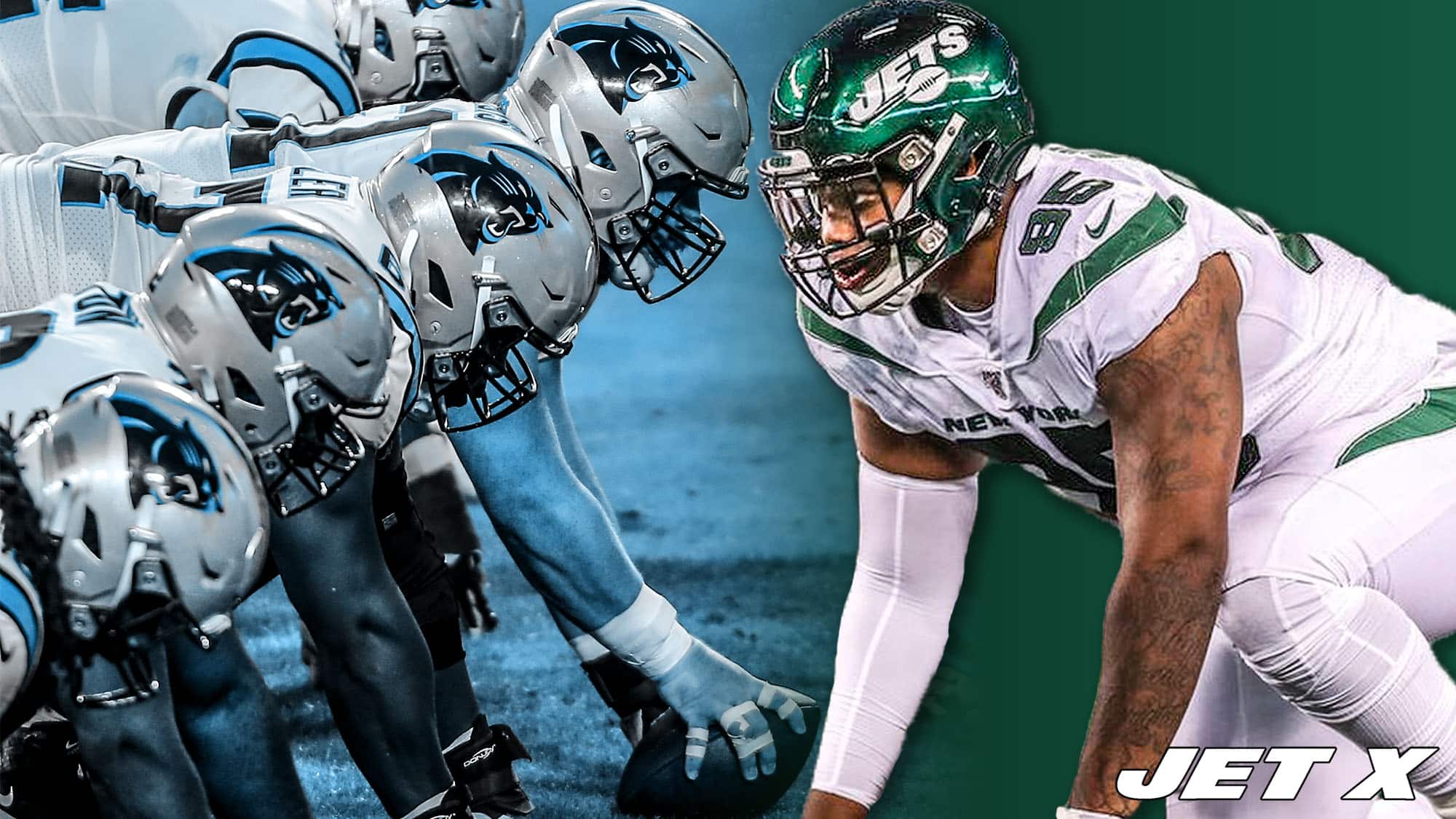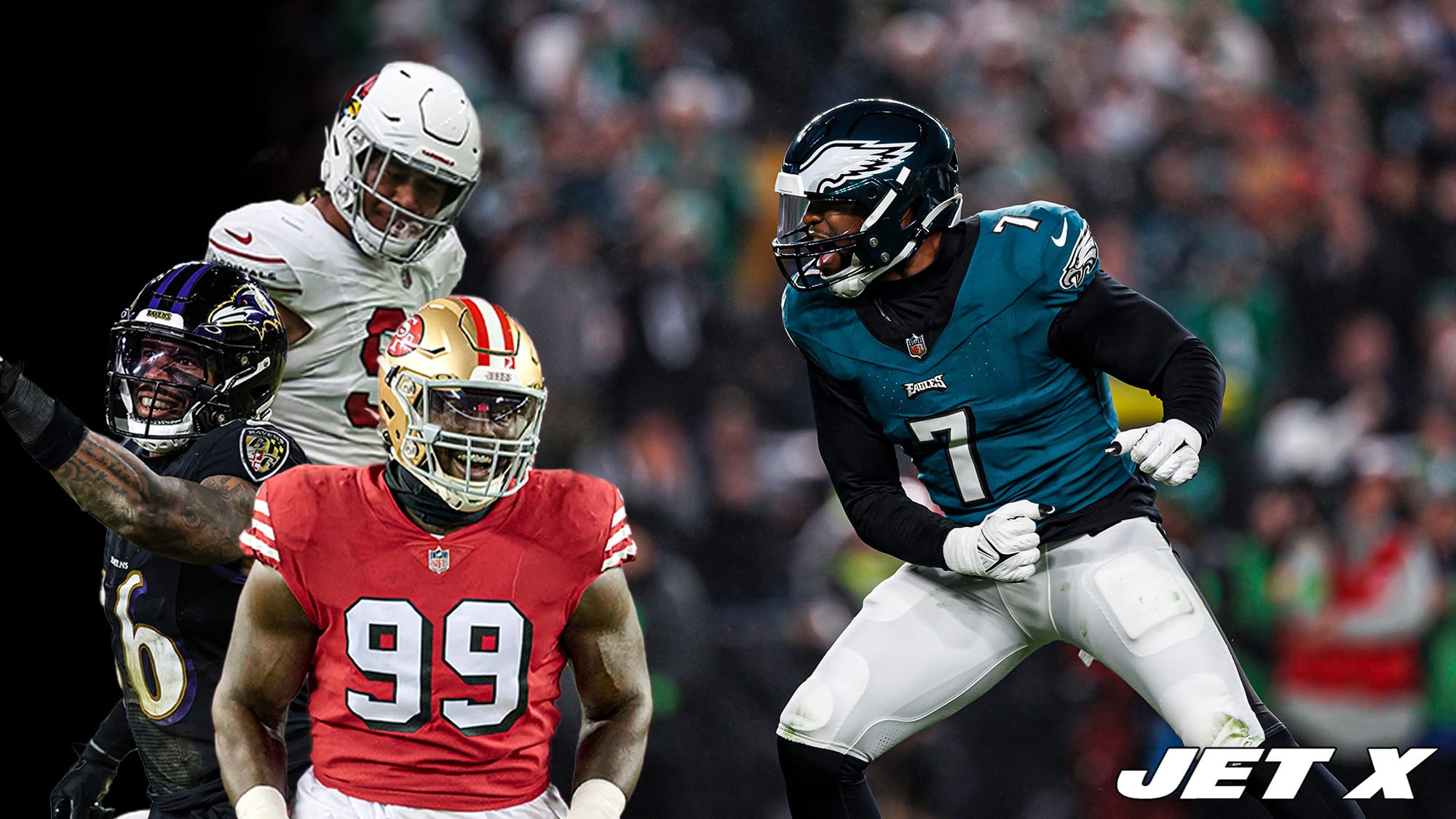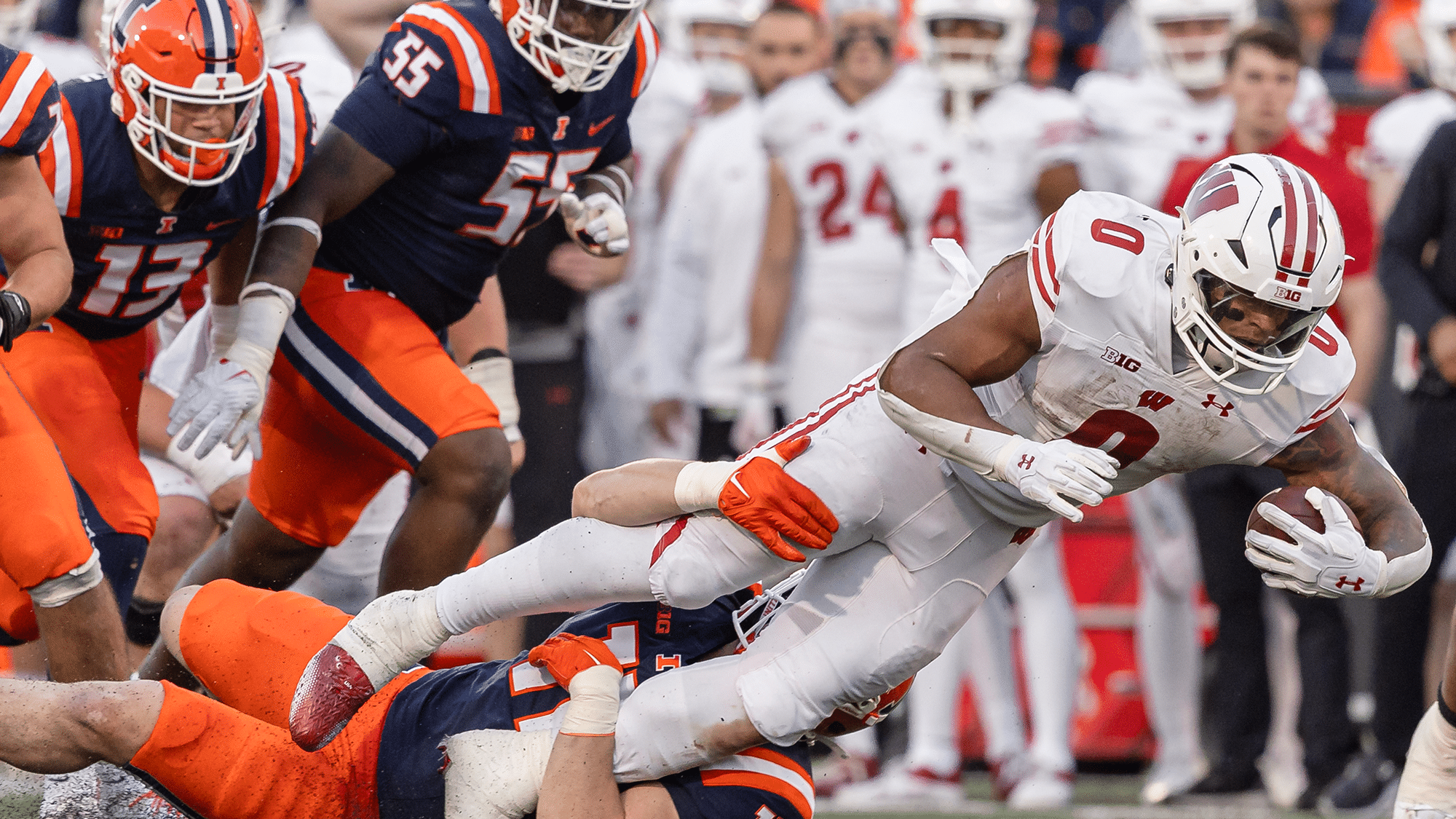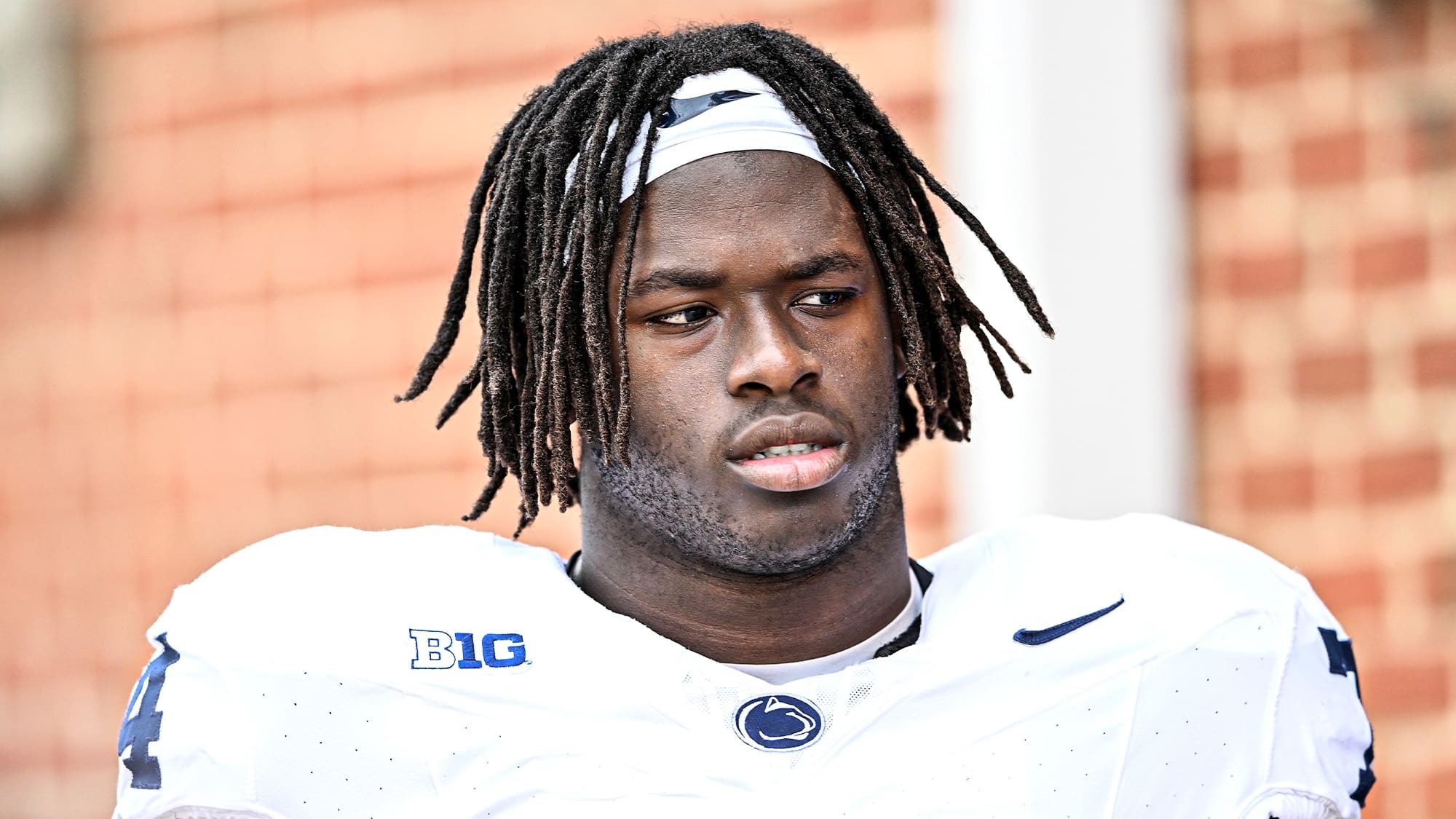The Carolina Panthers have an extremely weak offensive line
Former New York Jets quarterback Sam Darnold will have better support in a few areas with the Carolina Panthers than he had when wearing green. Offensive coordinator Joe Brady, running back Christian McCaffrey, and the wide receiver duo of D.J. Moore and Robby Anderson are all upgrades over their New York counterparts during Darnold’s tenure.
However, the 2021 Panthers are no better than the 2018-20 Jets at arguably the most important quarterback-supporting position: the offensive line.
On July 1, I put together a ranking of all 32 offensive lines in the NFL based on the cumulative Pro Football Focus grades of each team’s five projected starters. I used grades from the 2020 season, and for rookies, I used placeholders based on the average rookie-year performances of rookie starters at each position in recent seasons.
The Panthers … did not fare too well.
Carolina checked in at No. 28, ranking 29th in the run game and 26th in pass protection.
After the loss of a starter, the Panthers will be heading into their Week 1 matchup against the Jets with an even worse five-man unit than the one whose numbers are depicted above.
Starting right guard John Miller – arguably the third-best player on the starting five – will miss the game after being placed on the reserve/COVID-19 list. Replacing him will be third-year backup Dennis Daley, who only has two career starts at guard.
Here is Carolina’s projected starting offensive line for Sunday and each player’s overall Pro Football Focus grade over the past two seasons. For reference, the league average 2020 PFF grade for linemen who are projected as starters going into 2021 is 68.7.
- Left tackle: Cameron Erving (49.0)
- Left guard: Pat Elflein (59.5)
- Center: Matt Paradis (63.4)
- Right guard: Dennis Daley (58.9)
- Right tackle: Taylor Moton (78.8)
Outside of the tremendous Taylor Moton at right tackle, the Panthers have four turnstiles on their offensive line.
The Jets will have sizable mismatches in their favor across the board.
Left tackle: Cameron Erving vs. Shaq Lawson
Cameron Erving will be the worst left tackle that Sam Darnold has played with in the NFL by a wide margin. Mekhi Becton was good and Kelvin Beachum was decent – Erving’s track record is flat-out bad.
The 19th overall pick of the Browns in the 2015 draft, Erving has been a massive disappointment. He only lasted two seasons in Cleveland before being traded to the Chiefs for a fifth-rounder. Erving sputtered for three years in Kansas City and then played for Dallas in 2020.
As a Cowboy in 2020, Erving posted an overall PFF grade of 58.0, his career-high by an enormous margin (his previous best was 47.1). Yet, that grade still ranked at only the 17th percentile among qualified tackles.
In 2019, Erving’s 44.8 grade for Kansas City was the second-worst among all qualified tackles.
Even Darnold’s backup left tackles with the Jets – Chuma Edoga (53.3 career grade) and Conor McDermott (57.4 career grade) – have better reputations than Erving (46.3 career grade).
Shaq Lawson projects as the Jets’ starting right-side defensive end and most common matchup for Erving.
While Shaq Lawson is no Carl Lawson, he is still good enough to exploit a favorable matchup. Shaq had an 11.1% pressure rate for Miami in 2020 (73rd percentile among EDGE), and when he was playing defensive end on a more full-time basis for Buffalo in 2019 (as he will be doing with the Jets), he posted an even better 13.6% pressure rate (81st percentile).
Bryce Huff should also get some reps against Erving. Huff projects as a situational pass rusher for the Jets, seeing snaps on both sides of the field. He is coming off of a good preseason in which he had a 12.8% pressure rate with six pressures over 47 pass-rush reps.
Get Started: Learn More About Becoming A Jet X Member
Left guard: Pat Elflein vs. Quinnen Williams
Pat Elflein was one of the worst pass protectors that Darnold played behind in his Jets career. Last year, Elflein allowed pressure on 10.0% of his pass-blocking reps, second-worst in the NFL among all guards.
Left guards were Quinnen Williams‘ primary victims in his breakout season last year. I tracked every one of his 2020 pass-rush reps and found that he faced the left guard on 47% of his pass-rush opportunities last season, the largest portion among the five offensive line positions. Center ranked second at 31%.
I credited Williams with creating pressure on 16.1% of his battles against left guards, his best rate against any position. That’s purely dominant – the 2020 NFL average pressure rate for interior defensive linemen was 7.0%.
At PFF, Williams was credited with 2.5 pressures per game when lined up on the right side of the defensive line, fifth-best in the NFL among interior defensive linemen. From Week 7 onward, he boosted that number to 3.5, ranking second-best over that span behind Cameron Heyward (3.9).
Center: Matt Paradis vs. Foley Fatukasi
Matt Paradis was a perennial top-10 center over the first four years of his career with the Broncos. Since joining the Panthers in 2019, he has been mediocre. He posted identical overall PFF grades of 63.4 in each of the past two seasons, ranking 21st out of 32 qualified centers in 2019 and 20th in 2020.
Paradis was a solid pass blocker last season, ranking 12th out of 32 qualified centers with a 65.4 pass-blocking grade at PFF.
However, Paradis’ run blocking was problematic. His 59.6 run-blocking grade ranked 27th.
That could be a huge issue for the Panthers with one of the best run stoppers in the NFL set to line up across from Paradis – Foley Fatukasi.
Fatukasi owns a composite PFF run-defense grade of 86.8 over the last two seasons. That ties him with Bobby Wagner for third-best among all qualified defensive players in the NFL since 2019, trailing only Khalil Mack (87.7) and Aaron Donald (90.3).
Right guard: Dennis Daley vs. Sheldon Rankins
Sheldon Rankins has lined up on both sides of the defensive line fairly evenly throughout his career, but with Quinnen Williams projecting to dominate the right side, it seems likely that Rankins will lean towards the left side this year, frequently pitting him against the opponent’s right guard.
Daley is set to replace starter John Miller this week. The third-year man was a sixth-round pick out of South Carolina in 2019.
In his rookie year, Daley played in 14 games and started nine, all of those coming at left tackle. He was atrocious, allowing the worst pressure rate among all qualified tackles (10.1%). Daley’s total of 46 pressures allowed ranked as the fifth-most among tackles even though he ranked 51st in pass-block snaps (456).
Daley was inactive for most of the 2020 season. He played in five games and started three of those, getting 76 snaps at left tackle and 56 snaps at right guard.
The results were mixed in Daley’s limited time at the right guard position he is set to play on Sunday. He was poor in his first start against New Orleans’ deep defensive line, allowing three pressures on 22 protection snaps (13.6% rate) and posting a 57.6 run-blocking grade.
In his second start at right guard, Daley faced Detroit’s weak interior defensive line and played well. He allowed no pressures over 13 protection snaps and earned a 79.0 run-blocking grade.
Daley sputtered in this year’s preseason. Playing 61 snaps at guard throughout two games (42 at left guard, 19 at right guard), he struggled in both phases as he earned an overall PFF grade of 41.9. That ranked 93rd out of 96 qualified guards in the preseason.
Even though his box-score production has slipped over the past couple of years, Rankins has been a consistently good pass rusher throughout his career. In terms of pressure rate, he has ranked at the 80th percentile or better among qualified interior defensive linemen in each of the past four seasons (including his playoff production – he has been an excellent playoff performer).
Right tackle: Taylor Moton vs. John Franklin-Myers
This is easily the most balanced matchup of the five.
Taylor Moton is a star. He has started every game at right tackle for the Panthers since 2018 and has recorded three straight seasons with an overall PFF grade of 76.0 or better. His career-high 81.6 grade last season ranked fourth-best among right tackles.
Moton is great in both phases. He allowed an impressively low pressure rate of 2.9% last season (2nd-best among right tackles) while also posting a 76.3 run-blocking grade (10th-best).
It appears that John Franklin-Myers will be kicking out to the edge and primarily playing left defensive end for the Jets (with occasional appearances on the inside).
Franklin-Myers is coming off of a dominant season of interior pass-rushing. His pressure rate of 14.4% ranked third-best among interior defensive linemen, sitting behind only Stephon Tuitt (14.5%) and Aaron Donald (17.2%).
Will Franklin-Myers be able to translate that production from defensive tackle to the edge? His track record suggests he should have a good chance of doing so.
In his 2018 rookie season, Franklin-Myers primarily played on the edge for the Rams and had an 11.7% pressure rate that ranked at the 74th percentile among qualifiers at the position. That was as a 22-year-old rookie, so with natural development over three years, his ceiling as an edge defender could certainly be as high as the ceiling he displayed at defensive tackle.
Franklin-Myers and Moton may have an uber-competitive matchup in the passing game, but Moton’s edge over Franklin-Myers in the ground game may be the only sizable advantage that Carolina has across its entire five-man front. Over his two seasons, Franklin-Myers owns a PFF run-defense grade of 57.9. That is a few ticks below the 2020 league average for edge defenders, which was 61.9.
This is where the New York Jets can seize control of the game
Every Jets fan knows how much Sam Darnold struggles under pressure. As a Jet, Darnold completed 181 of 414 pressured pass attempts for 2,036 yards, 15 touchdowns, and 19 interceptions. That’s a 44.4% completion rate, an average of 4.9 yards per pass attempt, and a passer rating of 52.3.
In this year’s preseason, Darnold went 5-of-8 for 34 yards (4.3 per attempt) with a dropped interception when under pressure.
If the defensive front can take full advantage of this mismatch and win its one-on-one battles with great consistency, it will cover up so many of the disadvantages that the Jets have in the back end.
Most importantly, the Jets will not have to blitz to create pressure if their defensive front can cause havoc on its own. That would allow extra defenders to be dropped into coverage to aid the young linebackers and cornerbacks.
If New York is utterly dominant up front, Carolina may be prompted to neutralize the pass rush by getting the ball out immediately through screens, rollouts, RPOs, and other schemed-up plays.
This would severely limit the potential for Carolina’s wide receivers to exploit their mismatches against New York’s cornerbacks. Long-developing downfield plays with high yardage potential would be scrapped from the Panthers’ game plan, limiting them to a dink-and-dunk game.
In this case, the Jets’ defensive backs and linebackers would have a great load lifted over their shoulders in coverage. The cost would be an increased amount of responsibility to finish tackles underneath – far from easy, but a much lower-risk task than hanging with D.J. Moore and Robby Anderson downfield.
Everything revolves around what goes down in the trenches – and the Jets have an enormous edge in the trenches on this side of the football.













Jets will see a lot of Max protections, let’s see how the Jets respond